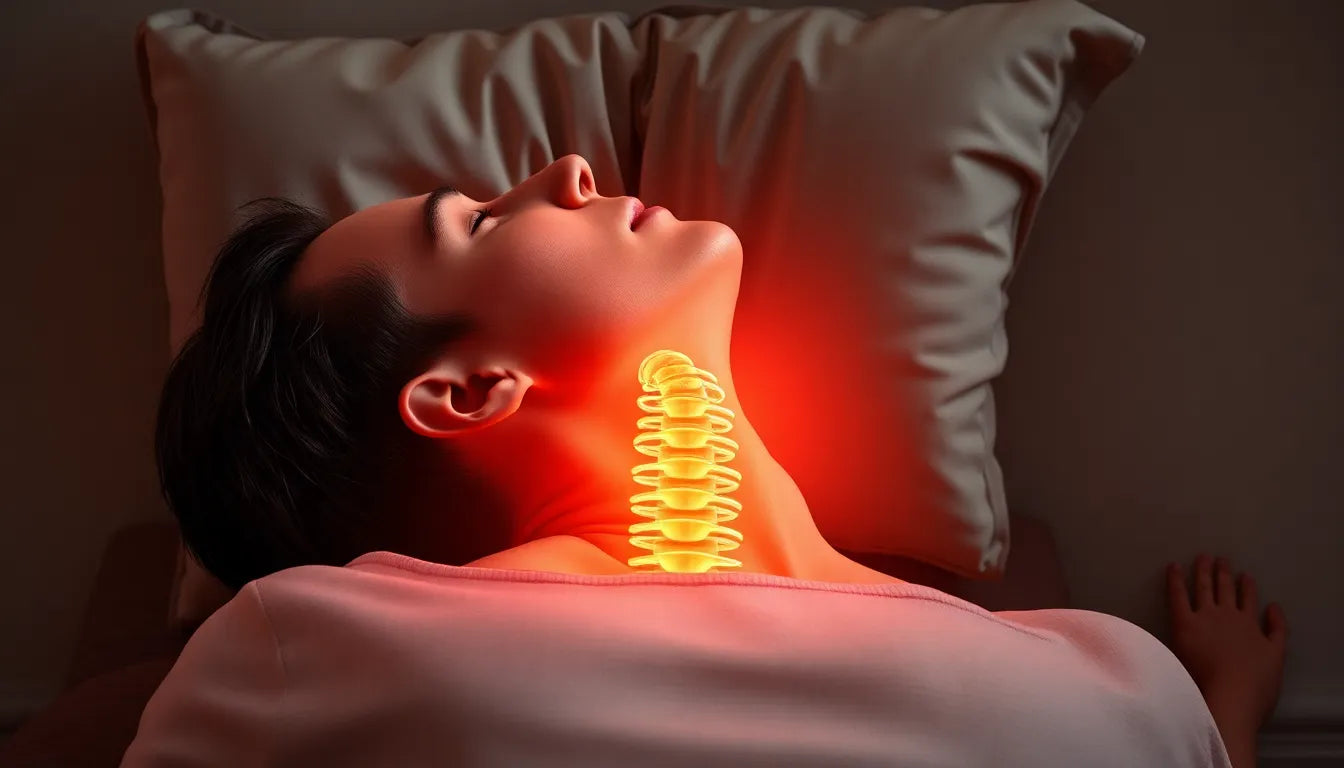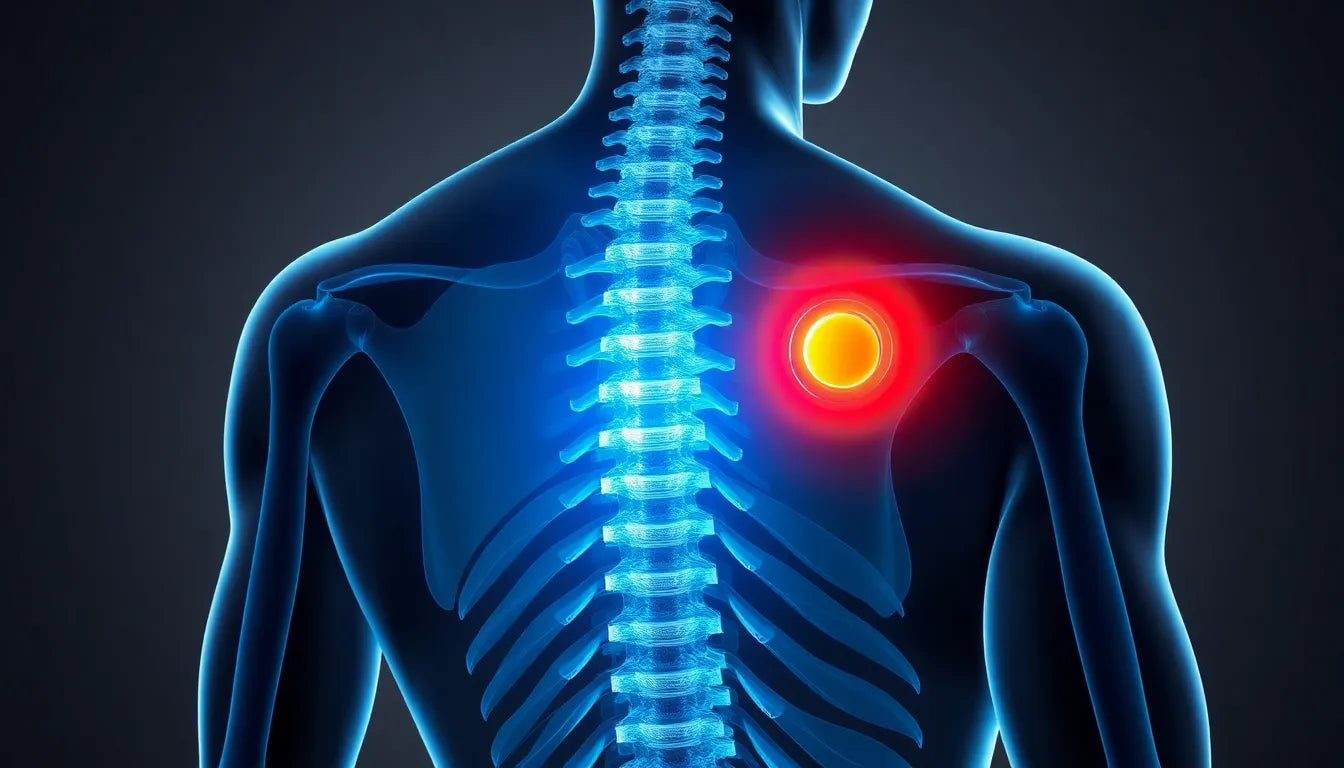Waking up with a stiff neck or feeling a persistent ache after a long day at the desk is an experience many of us know all too well. These discomforts are often attributed to muscle knots in the neck, a common yet misunderstood issue that can significantly impact our daily lives. But what exactly are these muscle knots, and why do they seem to target our necks so persistently?
What are muscle knots?
Muscle knots, often referred to as trigger points, are not actual knots in the traditional sense. Instead, they are specific areas where muscle fibers contract and tighten, forming a hard, sensitive spot within the muscle. These trigger points can cause discomfort and pain, sometimes radiating to other areas such as the shoulders, upper back, or even leading to headaches. Understanding the nature of these knots can help in managing and alleviating the discomfort they cause.
The importance of understanding muscle knots
Recognizing and understanding muscle knots is crucial for several reasons. Firstly, they are incredibly prevalent, affecting a large portion of the population at some point in their lives. Secondly, the impact of these knots extends beyond mere discomfort. They can lead to headaches, limit mobility, and significantly affect one's quality of life and productivity. By understanding what muscle knots are and how they affect us, we can better address the underlying causes and work towards effective relief and prevention strategies.
Muscle knots in the neck are particularly common due to the role of the upper trapezius muscle, which supports the head and neck. This area is prone to tension from poor posture, stress, and repetitive movements, making it a frequent site for these trigger points to develop. As we delve deeper into the subject, we'll explore the symptoms, causes, and effective ways to manage and prevent muscle knots, helping you find relief and improve your overall well-being.
Delving into the anatomy of muscle knots
Understanding muscle knots in the neck requires a closer look at the anatomy involved. These knots, or trigger points, are often found in the upper trapezius muscle, which plays a crucial role in supporting the head and neck. This muscle is responsible for facilitating movements such as shrugging and tilting the head, making it susceptible to tension and the formation of trigger points. The misconception that muscle knots are literal knots is common, but in reality, they are areas where muscle fibers have contracted and tightened, creating a palpable, tender lump.
Recognizing the symptoms of muscle knots
Muscle knots in the neck can manifest through various symptoms that affect daily activities. A deep, radiating pain is a hallmark of these knots, often spreading to the shoulders and upper back. This pain can be accompanied by stiffness and a reduced range of motion, making simple tasks like turning the head or lifting objects uncomfortable. In some cases, individuals might experience numbness or tingling sensations, further complicating the discomfort. The concept of referred pain is significant here, as muscle knots can contribute to headaches, adding another layer to their impact on one's quality of life.
Uncovering the causes and risk factors
Several factors contribute to the formation of muscle knots in the neck. Poor posture, especially when sitting at a desk for long periods without ergonomic support, is a primary cause. Repetitive motions, muscle overuse, and inactivity also play significant roles. Additionally, dehydration and stress are common culprits, as they can exacerbate muscle tension and trigger point formation. Understanding these causes can help in identifying lifestyle changes that may prevent the recurrence of muscle knots.
It's also important to differentiate between types of trigger points. Active trigger points cause spontaneous pain, while latent trigger points are only painful when pressed. This distinction is crucial for understanding the chronic discomfort that some individuals experience, as opposed to localized tenderness.
Addressing muscle knots: treatment and prevention
Effective management of muscle knots involves a combination of self-care techniques and professional treatments. Stretching exercises tailored to the neck and shoulders can help alleviate tension and improve flexibility. Massage therapy, whether self-administered or by a professional, can also be beneficial in reducing pain and promoting relaxation. Heat therapy, such as applying a warm compress, can further aid in loosening tight muscles.
For those seeking professional assistance, options like physical therapy and chiropractic care can provide targeted relief and guidance on maintaining proper posture. Lifestyle modifications, such as staying hydrated, making ergonomic adjustments to workspaces, and incorporating stress-reduction techniques, are essential for preventing the formation of new muscle knots.
Visual aids, such as diagrams or interactive visuals, can be valuable tools for demonstrating effective stretching exercises or ergonomic setups. These resources can empower individuals to take proactive steps in managing and preventing muscle knots, ultimately enhancing their well-being and productivity.
Treatment and relief strategies for muscle knots
Addressing muscle knots requires a comprehensive approach that combines self-care techniques with professional interventions. By understanding the available treatment options, individuals can effectively manage and prevent these troublesome knots.
Self-care techniques are a practical starting point for relieving muscle knots. Regular stretching exercises targeting the neck and shoulders can significantly reduce tension and enhance flexibility. These exercises can be easily incorporated into daily routines, helping to alleviate discomfort and prevent the development of new knots. Additionally, massage therapy, whether self-administered or performed by a professional, can be highly effective in relaxing tight muscles and reducing pain.
Heat therapy is another valuable tool in managing muscle knots. Applying a warm compress or using a heating pad can help loosen tight muscles, providing immediate relief. This method can be particularly beneficial when combined with stretching and massage, as it enhances the overall effectiveness of these techniques.
For those seeking more targeted relief, professional treatments such as physical therapy and chiropractic care offer valuable support. Physical therapists can provide personalized exercise programs and manual therapy techniques to address specific areas of tension. Chiropractors, on the other hand, can help realign the spine and improve posture, reducing the risk of muscle knots forming in the first place.
In addition to these treatments, lifestyle modifications are crucial for preventing the recurrence of muscle knots. Staying hydrated is essential, as dehydration can exacerbate muscle tension. Ergonomic adjustments to workspaces, such as using an ergonomic chair or adjusting the height of a computer screen, can also help maintain proper posture and reduce strain on the neck and shoulders. Furthermore, incorporating stress-reduction techniques, such as mindfulness or meditation, can alleviate tension and promote overall well-being.
Visual aids, such as diagrams or interactive visuals, can be invaluable resources for demonstrating effective stretching exercises or ergonomic setups. These tools empower individuals to take proactive steps in managing and preventing muscle knots, ultimately enhancing their quality of life.
Frequently asked questions
What causes muscle knots in the neck?
Muscle knots in the neck are often caused by a combination of factors, including poor posture, repetitive motions, muscle overuse, and inactivity. Stress and dehydration can also contribute to the development of these knots by increasing muscle tension.
How can I prevent muscle knots from forming?
Preventing muscle knots involves maintaining good posture, taking regular breaks from prolonged sitting, and staying hydrated. Incorporating stretching exercises and ergonomic adjustments into your daily routine can also help reduce the risk of muscle knots.
When should I see a professional for muscle knots?
If self-care techniques do not alleviate the discomfort or if the pain persists and affects your daily activities, it is advisable to seek professional help. A physical therapist or chiropractor can provide targeted treatments and guidance on managing muscle knots effectively.
Are muscle knots a sign of a more serious condition?
While muscle knots are generally not indicative of a serious condition, persistent or severe pain may warrant further investigation. If you experience additional symptoms, such as numbness, tingling, or weakness, it is important to consult a healthcare professional to rule out underlying issues.
By understanding the causes and treatment options for muscle knots, individuals can take proactive steps to manage and prevent these common discomforts, ultimately improving their overall well-being and productivity.
Sources
- Healthline. (n.d.). "Knot in Neck: Causes, Symptoms, and Treatment." Healthline.
- Medical News Today. (n.d.). "What to know about muscle knots." Medical News Today.
- DE Integrative Healthcare. (n.d.). "What Are Muscle Knots?" DE Integrative Healthcare.
- Piedmont Healthcare. (n.d.). "What are muscle knots?" Piedmont Healthcare.
- Healthline. (n.d.). "Muscle Knots: Causes, Symptoms, and Treatment." Healthline.
- Canadian Chiropractic Association. (n.d.). "Muscle Knots: What They Are and How to Treat Them." Canadian Chiropractic Association.


















